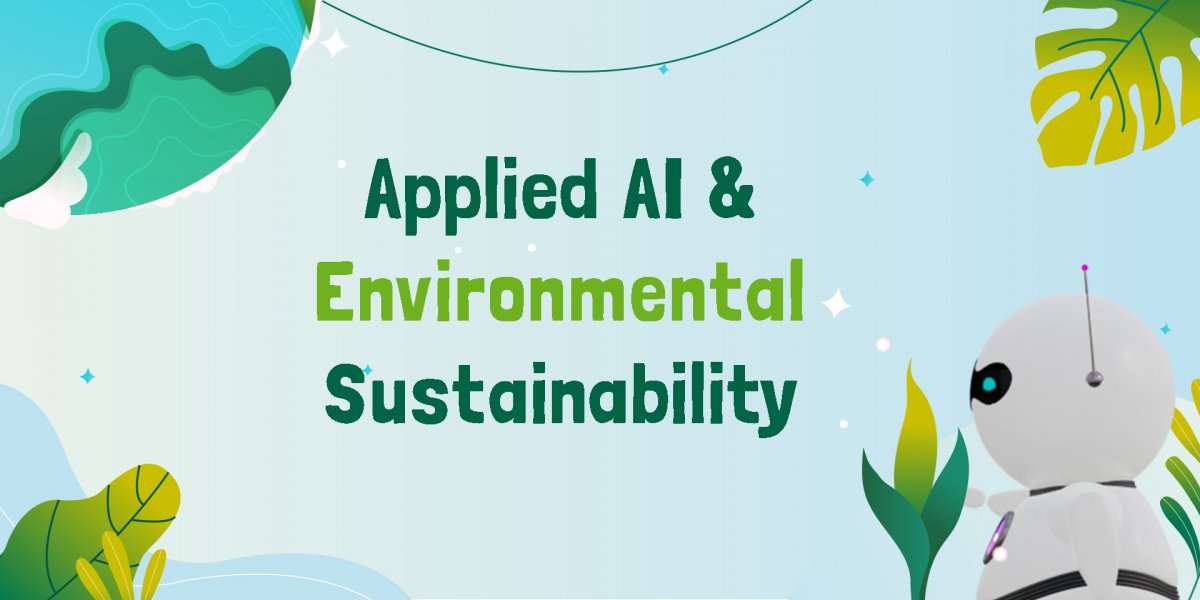AI For Environmental Sustainability
The evolution of AI has resulted in a significant transformation of various businesses and organizations. The field of artificial intelligence has flourished rapidly due to the huge investments and interest seen in the market for this technology. Large companies and organizations with huge environmental footprints have applied artificial intelligence to make their business activities more sustainable. With the adoption of AI, it has become possible to solve complex problems that previously appeared to be impossible to solve. The biggest challenge is whether the use of AI for environmental sustainability can really address the environmental issues and problems such as increasing carbon dioxide emissions.
What is artificial intelligence?
- Artificial intelligence (AI) refers to the ability of a machine or computer to mimic the capabilities of a human being.
- This includes problem solving, decision making, learning from previous examples and happenings, identifying unknown images with training from previous known images, etc.
- With the combination of various capabilities, it is possible for AI-powered machines to perform complex tasks like driving vehicles, which is commonly seen in autonomous vehicles.
AI for environmental sustainability to address the environmental challenges
The use of AI for environmental sustainability helps protect the environment by performing the following activities:
- Lower energy and carbon dioxide emissions.
- Monitoring deforestation
- Detecting carbon removal
- Monitoring and prevention of pollution
- Real-time monitoring of carbon dioxide emissions
- Detection of invasive species.
- Prediction and forecasting of pollutants being released into the air.
Climate Change Issues
- The implementation of AI for environmental sustainability can help optimize the generation and utilization of energy in real-time.
- Smart AI-enabled sensors can help collect data, analyze, and track energy utilization and optimize energy usage.
- AI for environmental sustainability is already being used in smart transportation. AI algorithms provide valuable information to users regarding the traffic and congestion on the road, thus helping to enhance safety, save time, and reduce vehicular pollution.
Examine the air quality
- AI for environmental sustainability can make use of data from vehicles, cameras, and sensors to closely monitor air pollution and quality.
- Applied artificial intelligence simulations can help alert people living in urban areas about the increasing levels of pollution.
- AI-powered tools can also help to identify the sources of air pollution.
Case study of Ericsson Global to reduce the carbon footprint of one of its parts of the supply chain process.
Ericsson is presently working on developing a sustainable system using applied artificial intelligence to reduce carbon dioxide emissions by optimizing the supply chain process. The process will help to lower the supply chain’s carbon footprint significantly.
The first stage (the monitoring phase)
- This phase involves measuring and analyzing the carbon dioxide equivalent emissions of transportation.
- The monitoring phase involved transparent reporting and quantified data to understand the complete supply chain CO2 emissions.
- The “monitoring” phase helped the company to know the existing situation about the carbon dioxide equivalent emissions in various complex transportation modes, such as local transportation, customer supply chain, product supply chain, etc.
- The main hurdle in developing such a robust solution was the lack of data availability for various transportation sources and developing the logic and calculation of the carbon dioxide equivalent emissions.
- This phase helped to measure and monitor the CO2 emissions across different transportation modes.
The second stage (The prediction phase)
- This stage entails transforming the collected data into future insights.
- With the collected data in-hand, the next phase was to identify certain trends and patterns based on which the future business could be predicted.
- Optimal utilization of transportation resources and distribution planning were a major challenge due to the various processes involved, uncertainty in transportation, and non-standardized procedures.
- With applied artificial intelligence and various machine learning (ML) techniques such as logistic regression, deep learning, cluster analysis, and others, both short-term and long-term shipment forecasts were obtained, which were more accurate than predictions made manually.
- The use of AI prediction helped logistic service providers (LSP) to deliver with precision and great accuracy, thus increasing productivity and lowering the delivery costs.
- The AI-powered forecast will also positively impact the product transportation chain.
The Third Stage (The Reduction phase)
After monitoring and analysis of the CO2 equivalent emissions, and understanding the long-term and short-term forecasts, this final stage involves planning and implementing various methods of reducing the CO2 emissions.
Here are the various possibilities of how CO2 emissions can be optimized.
- Fleet optimization by reducing unnecessary shipments and transportation activities.
- Improving the use of packaging and transportation materials.
- Improving transportation efficiency by using AI prediction.
- With the help of AI prediction, the breakdown of vehicles can be prevented
- Well-organized navigation system for improved movement of vehicles.
The three-phase system of monitoring, prediction, and reduction can help improve the visibility and transparency of CO2 emissions.
Ericsson’s three-phase approach can be used to address the issue of environmental sustainability. AI helping the environment can be turned from a mere concept to a real-world application. Just like Ericsson is using AI for environmental sustainability and how applied artificial intelligence can make a difference, other organizations, businesses, individuals, and governments can adopt AI too for environmental sustainability. The potential of AI for environmental sustainability is tremendous. If implemented correctly, it can help counter the problems of climate change and global warming.

